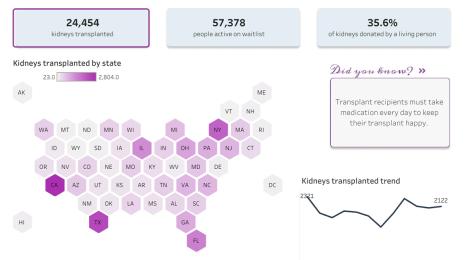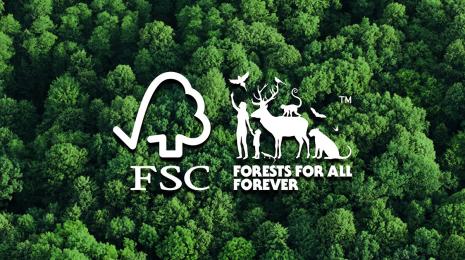Connecting Tableau employees and nonprofits for impact: Tableau Foundation looks back at 2019
It’s been just over a year since Tableau CEO Adam Selipsky closed his TC18 keynote with a bold commitment: to donate $100 million in software, training, and financial support against the world’s toughest challenges—poverty, inequity, climate change, and global health—by 2025.
As the year comes to a close, the Tableau Foundation team took the opportunity to reflect back on what we’ve learned about these four complex challenges, and also on how we can most meaningfully engage our employees in these issues. In this series of blog posts, we will share the most critical insights we’ve gained from our partners and our programming over the past year, and look forward to what’s to come in the next decade.
What does employee engagement at Tableau look like?
Since the launch of the Tableau Foundation in 2014, connecting Tableau employees with our surrounding communities has been a core part of our work. “We recognize that we have a footprint in the communities where we work, especially where we have offices,” says Ashley Monson, Tableau Foundation’s Social Impact Program Manager. “Our people are inclined to be a part of their communities, and we want to support their efforts—it’s about being a good neighbor.” In the last several years, we’ve spent hours listening to employees to understand what makes for a meaningful engagement experience—and we’ve sat with members of our non-profit community to understand what programs and initiatives create the most positive impact for them.
Above all, Tableau Foundation aims to make a positive impact for our non-profit partners and our employees—creating connections to amplify the impact of their work. And that, we’ve learned, is a delicate and constantly-evolving balance.
Here are some of the key takeaways we’ve gained over the course of our employee engagement programming in the last year (Monson also shared some of these insights during her presentation at Tableau Conference 2019).

1. Depth is more important than breadth
Through our conversations with non-profit partners—and our own research into what works and what doesn’t when it comes to employee engagement—one thing has stood out in the past year: traditional corporate volunteering is missing the mark. You might be able to imagine this type of programming. A large group of employees, often in matching shirts, shows up for a few hours to dish up food to people experiencing homelessness. Or in the midst of a corporate conference, there’s a station where attendees can help pack supply kits that a non-profit will later distribute to families in need. These events have an aura of doing good, but as we’ve learned from our partners, they’re often a hassle for non-profits.
As Vu Le, a non-profit leader in Seattle wrote this past year on his blog: “Few of us want 400 people, all wearing the same t-shirts, to descend on us in one day… it costs us a lot of time and effort and money to plan these events.” In fact, Monson adds, non-profits have even begun charging companies a fee to participate in one-day volunteering events to offset the costs and labor associated with them for the non-profit.
Tableau Foundation has built some programming around events like this, but we’ve been consciously taking steps to shift away from breadth of engagement—getting as many people to volunteer as possible—to focus on depth. One way we’re doing that is through a program we launched this past year called Mission Projects. Through it, a handful of Tableau employees embed with a non-profit partner of the Foundation for three weeks to work in partnership on a data project. This year, we ran two Mission Projects—one in India with Operation Asha, where volunteers worked on geolocation data for tuberculosis patients, and one in Denver, where volunteers worked with the local homeless services organization to integrate their different data streams. Not only are Mission Projects a big contrast to en-masse volunteering programs, they also focus on the use of data to solve problems, which both enables employees to put their skills to good use, and sets non-profits up for long-term success with data.
Tableau Foundation runs a successful program called Service Corps, where employees can volunteer to help a non-profit with a short term data project for around eight hours. “But some of our closest partners are trying to tackle really big challenges using complex data sets,” Monson says, and Mission Projects are designed to offer the more sustained, deep support we’d been hearing would be welcome. In all of our engagement and volunteering programming, we’ve learned that success isn’t just in the numbers—it’s about the value of the experience for both employees and our non-profit partners.
2. Know the value of letting our partners take the lead
So far, we’ve seen success with Tableau Mission Projects. One of the reasons for that, Monson says, is that Tableau Foundation worked to understand the criticisms around pro-bono volunteer programs run by tech companies before launching our own. “One of the most common criticisms I heard was that the non-profit wasn’t a part of the planning process for the program at all,” she says. “They didn’t have a choice in which volunteers were selected or exactly what their skills were, or what the deliverables of the program were going to be.” So when designing Mission Projects, Tableau Foundation decided to flip that model.
Tableau Foundation worked with MovingWorlds, an organization that designs and runs pro-bono programming for companies to design a program that brings the non-profit partner into the planning process. “The non-profits submit a skeleton for the project they’d like to pursue, and then we do recruitment for employees around that,” Monson says. “They get to interview the candidates and have total veto power if we recommend people that they don’t think are the best fit, and once the volunteers are selected, it’s a very collaborative planning process where everyone works together to make sure that what the volunteers are going to be working on is in like with the organization’s expectations.” Matt Richard, data analyst for Metro Denver Homeless Initiative, said that in the leadup to Tableau volunteers arriving in Denver, they had a series of calls spanning a month to catch the volunteers up on their expectations, the types of data they’d be working with, and some of the barriers his team had felt when working with their data. “It was about setting up that mutual context—things on our side, things that were possible from the Tableau perspective—so when they got here, we were able to start working with data and building dashboards right away,” Richard says. “It was clear this wasn’t a one-off thing, but something we would be able to keep working with.”

“Non-profits are the experts on their needs,” Monson says. “We might be able to guess what might be helpful or what kind of programming might work well, but ultimately, the best way to figure it out is just to ask.” And if that means that programming needs a refresh more often, that’s the point. “We’ve learned to be open to keep evolving,” Monson adds. “If you want to support communities, you have to keep checking in with those communities and remain connected to what their needs are and what their expertise is telling them.”
3. Get buy-in across the company to create meaningful employee experiences
Tableau has always been invested in supporting a culture of engagement and giving back among employees. “One of the primary ways we support our employees making a positive impact on our communities is through our matching programs,” Monson says. For every dollar an employee donates to a cause, Tableau will match it, and the company will make a financial match for every hour an employee spends volunteering.
As Tableau Foundation has evolved its programming to focus on more sustained engagement between non-profits and employees, like through Mission Projects, the way the company supports the work has evolved as well. Beyond financial backing, Tableau corporate has supported the work as a part of company culture. An employee taking three weeks away from their team and day-to-day work, after all, could be seen as a big lift or an inconvenience to the company. But our employee volunteers emphasize that working on a deep level with non-profits using data and Tableau for good energizes and gives greater meaning to their work back at the office. As Lauren Beck, a volunteer who participated in the Mission Project with Operation Asha, shared: “It gives me a different perspective when working with customers and in terms of leading my team – reminding them that they are supporting something bigger.”
"It gives us more empathy in supporting others, helping humanize that and helping people remember the actual, real power of what we’re doing and its value to other people in the world."

And the program can be a way for employees to meaningfully connect with issues outside of their day to day work. Jason Weill, a Tableau employee who spent three weeks working with Metro Denver Homeless Initiative, says spending three weeks with an organization using data for impact is an eye-opening experience for employees who spend their normal work days building the infrastructure that enables this use of data. “For Tableau people, this is a way to attack a problem and learn more about it, and challenge their own assumptions by thinking about a problem in a critical way,” Weill says. “It’s not for everyone, but you can learn a lot and get out of your comfort zone by working with different people at different organizations in this way.”
In our work on employee engagement at Tableau Foundation over the past year, we’ve made a consistent effort to center our non-profit partners in everything that we do, and encourage them to lead with their expertise. But what we’ve also learned is that doing so ultimately creates a much better experience for the employees, who have a chance to use their skills against a complex issue, and for Tableau itself, which is able to see continual reminders of how data can change organizations and lives for the better.
Learn more about our employee engagement programs here.








